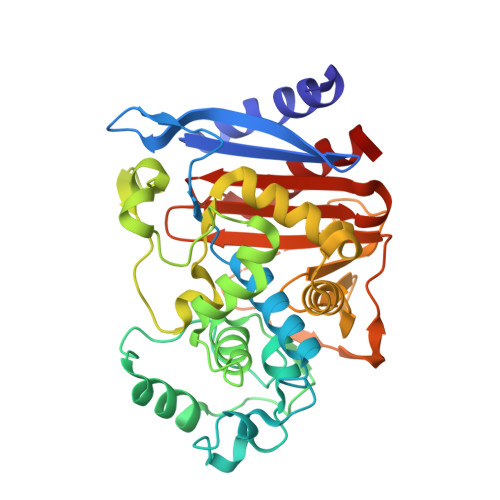Design, Synthesis, Crystal Structures, and Antimicrobial Activity of Sulfonamide Boronic Acids as beta-Lactamase Inhibitors
Eidam, O., Romagnoli, C., Caselli, E., Babaoglu, K., Pohlhaus, D.T., Karpiak, J., Bonnet, R., Shoichet, B.K., Prati, F.(2010) J Med Chem 53: 7852-7863
- PubMed: 20945905
- DOI: https://doi.org/10.1021/jm101015z
- Primary Citation of Related Structures:
3O86, 3O87, 3O88 - PubMed Abstract:
We investigated a series of sulfonamide boronic acids that resulted from the merging of two unrelated AmpC β-lactamase inhibitor series. The new boronic acids differed in the replacement of the canonical carboxamide, found in all penicillin and cephalosporin antibiotics, with a sulfonamide. Surprisingly, these sulfonamides had a highly distinct structure-activity relationship from the previously explored carboxamides, high ligand efficiencies (up to 0.91), and K(i) values down to 25 nM and up to 23 times better for smaller analogues. Conversely, K(i) values were 10-20 times worse for larger molecules than in the carboxamide congener series. X-ray crystal structures (1.6-1.8 Å) of AmpC with three of the new sulfonamides suggest that this altered structure-activity relationship results from the different geometry and polarity of the sulfonamide versus the carboxamide. The most potent inhibitor reversed β-lactamase-mediated resistance to third generation cephalosporins, lowering their minimum inhibitory concentrations up to 32-fold in cell culture.
- Department of Pharmaceutical Chemistry, Byers Hall, University of California San Francisco, 1700 4th Street, San Francisco, California 94158, United States.
Organizational Affiliation:


















